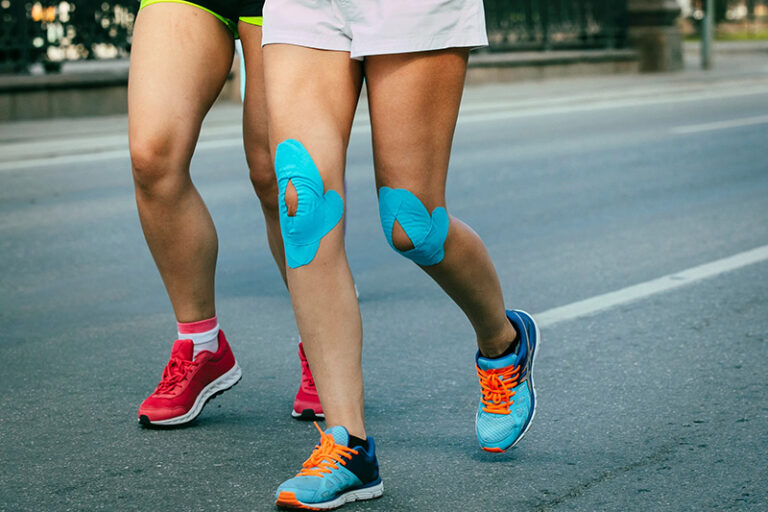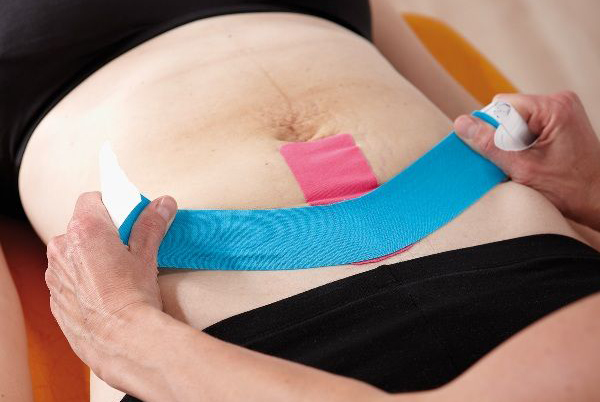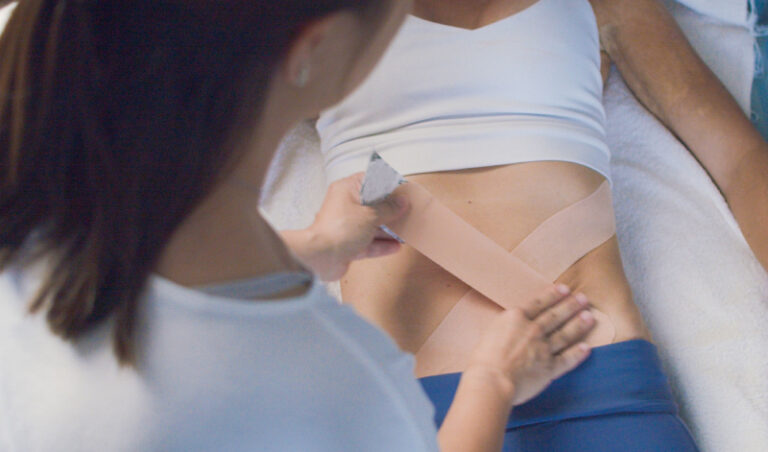Sports injury tape is not exclusive to e-sports players and athletes. In our daily life, sports injury tape can also play its role as a “mobile rehabilitator”.
Sports injury tape can be cut according to the difference in the taping site and the treatment effect. Common cutting shapes are I-type, X-type, Y-type, O-type, and claw-type.

Symptoms that sports injury tape is used for
Lumbar muscle strain
Lumbar muscle strain is also known as “functional low back pain” or “lumbar back myofasciitis.” It is often caused by repeated pulling or squeezing by external force, leading to chronic damage to soft tissues such as lumbar muscles, fascia, and ligaments, as well as local aseptic inflammation. The sports injury tape can provide tension for the skin, creating more space for the remodeling of fascia and soft tissue, thereby activating the nervous and circulatory systems.
Sticking method: “I” shape

Cervical spondylosis, neck and shoulder pain
For people who stare at the computer for a long time, the cervical spine is susceptible to abnormal pressure load. Over time, the normal curvature of the cervical spine becomes straight or reduced, forming a typical upper cross posture. Posture changes are manifested as shrugging, winged scapula, increased curvature of the thoracic spine, etc., accompanied by varying degrees of dizziness and numbness, neck and neck pain, etc. Using sports injury tape can reduce the pressure on the cervical spine.
Tape method: “Y” shape + “I” shape

“O” shape taping: Relieves knee pain, maintains knee muscle tension, and promotes circulation and metabolism.
“Claw” shape sports injury tape: reduce knee edema. When using, raise the injured part of the knee joint and put it in a stretched position. Remove the backing paper from the uncut end of the sports injury tape and cover it above or below the swelling. Then, slightly stretch the four sports injury tape strips in turn and cover them on the injured area. You can cover another sports injury tape of the same type on the opposite side. The effect of two sports injury tapes crossing vertically and horizontally is better.

Thumb sprain
The hand is an important organ for the human body to control fine movements. Finger joint sprains often occur in sports contusions, such as playing basketball and dancing; postpartum mothers’ “mom hand” is also called tenosynovitis; and people who often use mice and keyboards. In targeted rehabilitation treatment, the combination of sports injury tape and sports training can greatly improve the efficiency of rehabilitation. Experiments have shown that, clinically, sports injury tape combined with sports therapy can effectively promote the recovery of radial styloid stenosing tenosynovitis in street dancers.

Hallux valgus
Hallux valgus (HAV) is a common foot deformity, which is mainly manifested clinically as forefoot deformity and pain and limited walking in shoes, which seriously affects the patient’s quality of life.
People with hallux valgus can stretch and massage the muscles at the base of the big toe to relax so that the tension of the muscles pulling inward can be reduced, and toe spreading training can be performed at the same time to help it reset or maintain the current condition without worsening.
Taping method: “I” shape
“I” shape sports injury tape does not affect the strength of the muscles at the base of the big toe, but the resulting pulling sensation can make the pain point feel stronger during exercise and stretching. By strengthening proprioception and strengthening muscle recruitment, the big toe joint can be better moved, the surrounding muscles can be exercised, and the muscle strength can be strengthened.

How do you choose and use sports injury tape?
Since the concept and efficacy of sports injury tapes have been recognized in recent years, many brands of products have appeared on the market. You can refer to the following criteria for selection:
Select Material
· Elasticity, comfort, breathability, stickiness, durability, waterproof, extensibility, anti-allergy
· When the maximum tension is applied, it can be stretched to 150%~180% of the original

Choice of isolation paper
· There are many dividing lines to provide a basis for cutting. The distance between solid lines is usually 5cm, and the distance between dotted lines is usually 1cm
Choose a regular brand
The products of regular brands all follow strict quality control standards and have quality certification certificates. They are safer to use and less prone to allergies.
Common brands on the market are KT tape, Kinesio, etc. These brands have a high market share because they started earlier. However, most of these brands are more expensive.
You can also buy directly from kinesiology tape manufacturers such as Aupcon to save on costs. Focusing on sports tapes for 13 years, with its factory, there is no intermediary to make a profit, and the price is lower.

Points to note when using
· Patch usage time: In theory, changing a new set of patches every two days will have a more noticeable effect
· Before using the sports injury tape, you need to clean the skin surface and remove hair
· If there is a wound on the skin, avoid sticking it directly to the area
· The sports injury tape can touch the water. If you take a shower, you can press it dry with a towel or blow it dry with a hair dryer
· When cutting, the four corners of the sports injury tape can be rounded to reduce the curling situation.
Warm reminder: Since the sports injury tape mainly uses its viscoelasticity and mechanical direction, combined with human anatomy and biomechanical principles to fix, strengthen, or relax muscles, and for different symptoms and manifestations, there are often individual differences in application techniques and force directions. It is recommended that it be applied under the guidance of professionals. Learning how to use the kinesiology tape for the best results would be best.



